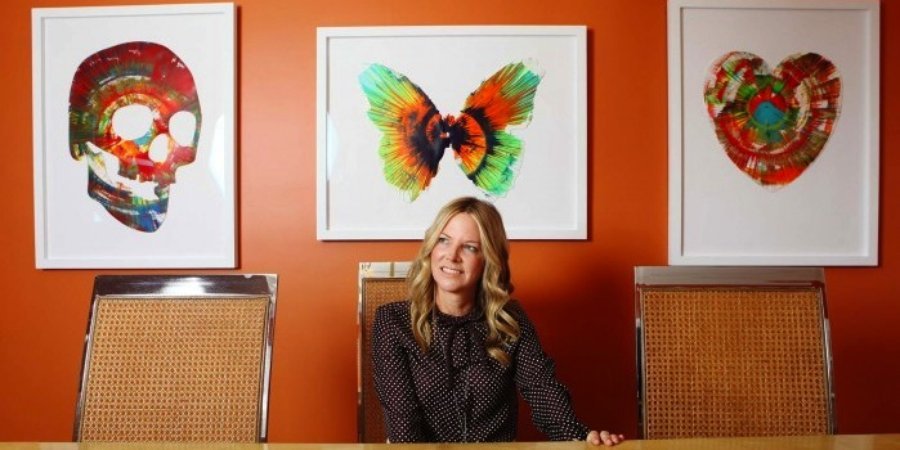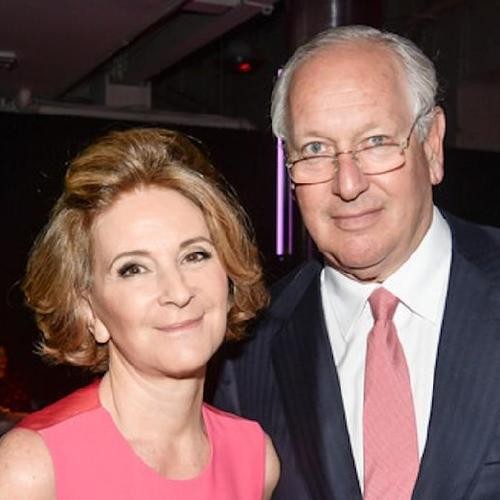“There’s never been a more exciting place to be than in L.A. right now,” says the television producer and art collector Maria Arena Bell. Indeed, the city’s art scene is heating up to a degree it hasn’t felt since the 1960s—and, by all accounts, Bell has played an integral role in its evolution.
She has, however, never shied away from its growing pains either. In 2008, Bell, then the head writer and executive producer of The Young and the Restless—the soap created by her husband Bill Bell, Jr.'s family—joined the board of the city's Museum of Contemporary Art. At the time, it wasn’t a particularly glamorous job: the global financial crisis was in full swing and the museum endowment had plummeted by $34 million. But Bell signed on anyway and recruited board members, organized benefit galas, and helped appoint a new director, Jeffrey Deitch (who left the institution amid some controversy last month to return to his roots as a dealer in New York).
Today, Bell plans to ease out of her expiring leadership role at MOCA once it names a new director, but plans to stay involved with that institution and the many other arts organizations she supports. Bell spoke to Artspace about collecting art, and what she has planned for her next chapter.
How did you begin collecting art?
I studied art history in college and loved art from an education standpoint. I started collecting when I moved to Hollywood to work as a writer in the 1980s. The first things I bought were George Hurrell vintage Hollywood photographs, and I still own that collection. Andy Warhol loved those old Hurrell film stills, and that was the beginning of my being a collector and loving living with art. Then I met my husband when we were in our mid-20s, and collecting is something that has been incredible for us. We buy some things together and he has an extraordinary collection that he spearheads. He is really the passionate collector, and I’m more interested in a very eclectic group of artists that just speak to me personally.
How do you decide today what to add to your own collection?
I have a very personal collection of artists whose work I respond to. I’m in my office now looking at work by Mark Ryden, Francesco Vezzoli, and other young artists. I am really drawn to things that speak to me, and they don't all really make sense as a collection. Some are quirkier than others, like Ryden, who is sort of outside the rigors of the market and attentions of the art world. Bill's collection is very focused on just a few artists in depth, while the collection that I've built is very insignificant in comparison. My main connection to the visual art world has been through philanthropy.
You chair the National Art Awards and have served on the boards of P.S. Arts and MOCA, among others. How did you get involved with these organizations?
I’m just a regular person who went to public school. I wasn't exposed to art in any way other than through school and growing up in Southern California. So when I was going off to college I knew I wanted to be a writer, but I loved art so much that I studied art history, and it shaped my life. The first organization I got involved with was P.S. Arts, a very grassroots group that puts arts education back in public schools. I was the chair of that board for six or seven years, and I’ve been on the board of Americans for the Arts for over ten years. My involvement with MOCA came out of the idea that, as a Los Angeleno, I feel the museum should be accessible to everybody. I stepped in as chair during the pivotal crisis of 2008 out of a sense of civic duty and a love of contemporary art. My relationship with art is so much more about the fact that I care about people having access to it.
Is it that populist perspective that led you to so staunchly back Jeffrey Deitch, who was known for producing crowd-pleasing exhibitions during his tenure as director of MOCA?
There's been this misunderstanding that in order to get people in the doors you have to fill out or dumb down an exhibition, and that's not true. There have been exhibitions all over the world that display things you might wonder about showing in a museum, but that's the judgment call of museums or curators. At MOCA, I did feel like we cared about being relevant to L.A.—and if you look at the program under Jeffrey, it didn’t change that much. He became known for a few lightning-rod exhibitions that stood out over a diverse and rigorous program that drew more people to MOCA than have been there throughout history.
As co-chair of the museum's search committee, are you looking for some of the same qualities in the museum's next director?
Whoever becomes next director will impart great vision and leadership and move the museum into its next phase. I think the board is a mixture of people who love the tradition of MOCA and the seminal exhibitions of the past—everyone would agree that we've had some of the most historic exhibitions ever—but who have also embraced the risk-taking that someone who is a little more free-thinking is willing to do. I don’t think you'll see an over-correction where MOCA will never take another risk. Whoever embraces this challenge next has an extraordinary platform and will move toward a space the museum has never been in before. I think it’s a really plumb job.
When do you expect to appoint the new director?
We hope that within the next six months we'll be naming the next director. That's an ambitious, but reasonable, take on it. By that point, I probably won't be the chair, but I will still be on the board.
What role do you think MOCA has played in the evolution of the greater Los Angeles art scene in recent years?
I think there's never been a more exciting place to be than in L.A recently. L.A. is the place where artists want to live and work. The art schools, and the major artists here who are teachers, have contributed to that. I think it has never been more relevant than right now, with LACMA taking an active role in contemporary art, which hadn’t been a traditional role of that museum prior to [director] Michael Govan, and it's great to see the Hammer Museum under Annie Philbin. MOCA, historically, has always had one of the finest contemporary programs in the world, and one of finest contemporary collections in the world. I think that that continues at MOCA, and that's one of our goals.
In addition to departing the position at MOCA, you also recently left a long career in daytime T.V. What’s next for you?
It's exciting. As you go through life there are all those things that you're going to do someday, but you're always paying your dues. I've certainly worked very hard, and it was a huge juggling act chairing a major museum board and running a television show. I think now, having left the show and ultimately being on the cusp of leaving the leadership role at MOCA, it's time for me to focus on myself. I’ve founded my own production company and am writing a feature film and a sitcom. Television isn't the same anymore—it's online and on so many other devices, and that's so exciting. There’s a great demand for content and so it’s a great time to be an entrepreneur. Plus, I'm a mom with two teenagers, so I’m really looking forward to focusing on my family. But I’ll still be involved at MOCA and P.S. Arts. You don't leave those things behind, but you let other people love them.
Last question: if you could own any work of art, what would it be?
The first thing that comes to mind is the 32 Campbell’s Soup Cans at MoMA, once owned by my friend [former Ferus dealer] Irving Blum. It sums up the century I was born in, so that artwork would speak to me the most. Deitch would always say that he’s a child of Warhol, and so am I, because I love pop culture and really embrace the world through art.



























